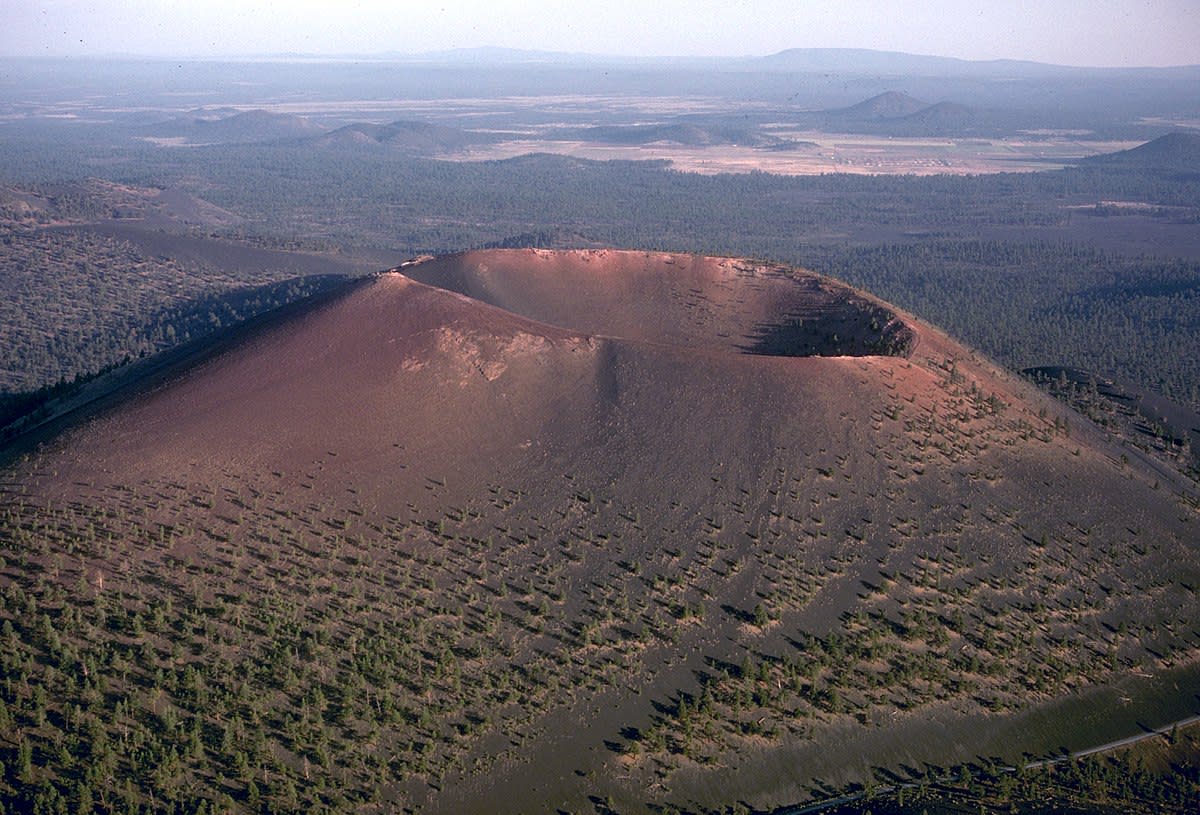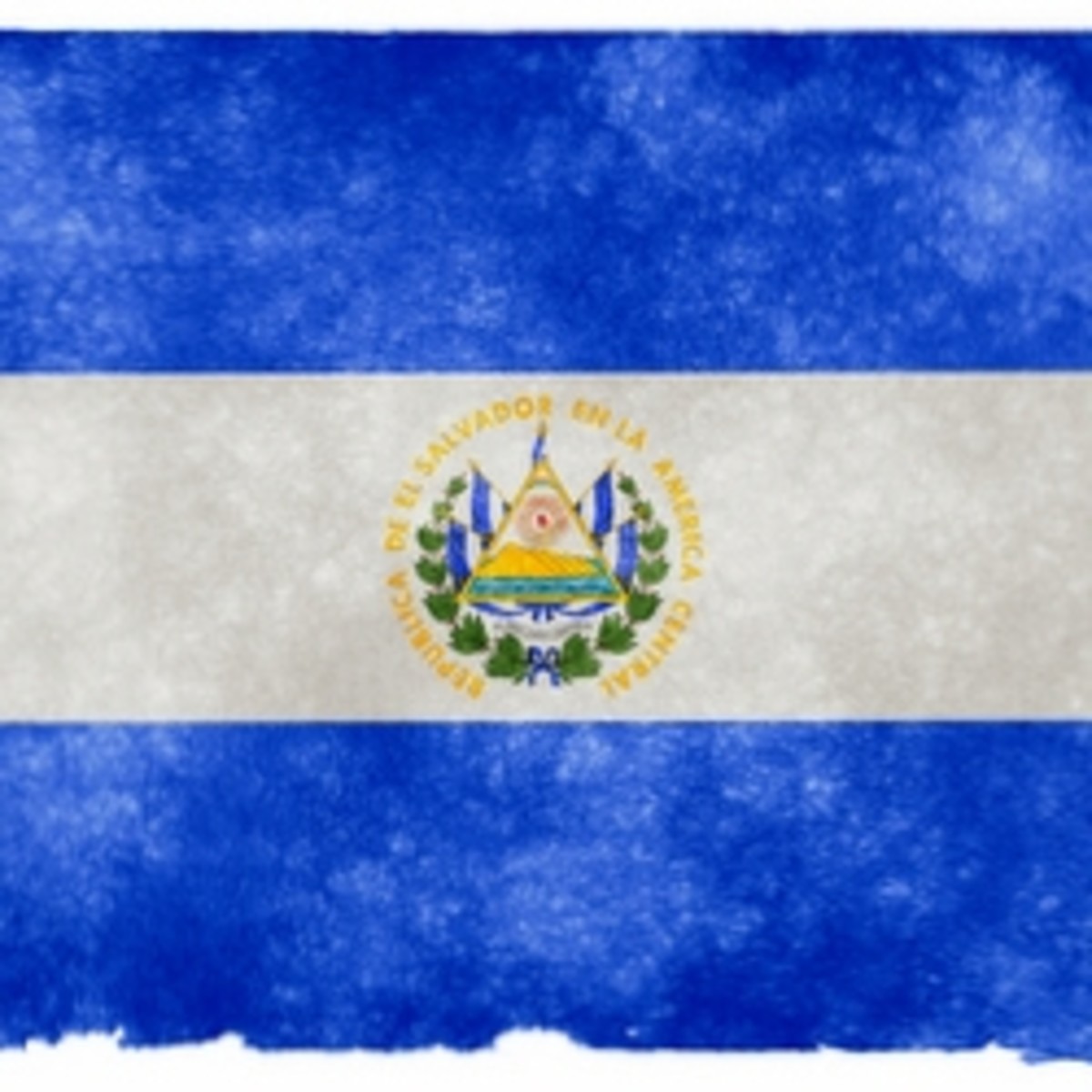Paricutin Volcano, Mexico
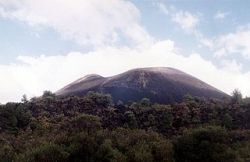
Paricutin
The story of Paricutin is a fascinating one. From flat ground, the volcano grew to a height of 1100 feet in just one year! It appears on many versions of the Seven Natural Wonders of the World. Paricutin is part of a large volcanic field that covers much of west central Mexico, but Paricutin is unique due to the fact that it formed such a short time ago.
Photo courtesy Wikipedia/K.Quintero
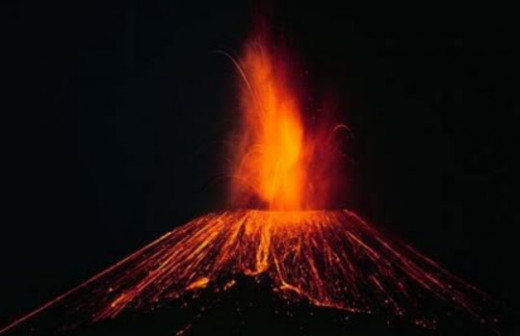
Photo of a 1946 eruption of Paricutin.
Public domain photo courtesy Wikipedia
Volcano Question
Have you ever seen an erupting volcano?
Volcano Guides
Background
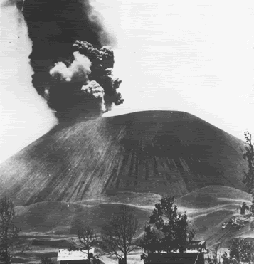
The Pariutcin Volcano began as a small fissure in a cornfield owned by farmer Dionisio Pulido on February 20, 1943. Pulido and his family all witnessed the initial eruption of ash and stones as they plowed the field. A large percentage of the volcano's growth occurred during that first year, while it was still in the explosive pyroclastic phase. The nearby village of Paricutin (after which the volcano was named) was buried in lava and ash; the residents were forced to relocate.
At the end of this pyroclastic phase (about one year) the volcano had grown height of 1100 feet. For the next eight years the volcano would continue erupting, although this was mostly quiet eruptions of lava that would burn the surrounding land. The volcano's activity would slowly decline during this period until the last six months of the eruption, during which violent and explosive activity was often seen. In 1952, the eruption ended and Paricutin, now at a final height of 1400 feet, was finally dead. Like almost all cinder cones, Paricutin is a monogenetic volcano, which means that it is extinct, and will never erupt again.
U. S. Government public domain photo courtesy usgs.gov
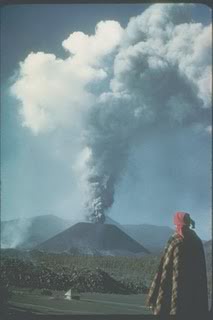
Public domain photo courtesy Wikimedia Commons
- Official ParicutÃn Site
This official site relives the in-depth story of the Paricutin volcano, detailing its eruptions between 1943 and 1952. - Paricutin Volcano: History and Facts
The Paricutin Volcano erupted in a cornfield. The youngest North American volcano has zapped scientists and vulcanologist all over world. Paricutin Volcano: History and Facts. - ParicutÃn, The Volcano, Michoacán : Mexico Travel
On February 20th, 1943, after a couple of weeks of ominous earth tremors and strange underground sounds, the ParicutÃn volcano in Michoacán, ... - ParicutÃn volcano, Mexico (Michoacán-Guanajuato volcanic field)
ParicutÃn volcano, Mexico (Michoacán-Guanajuato volcanic field) ... ParicutÃn is one of the few volcanoes whose birth has been witnessed by man. ...
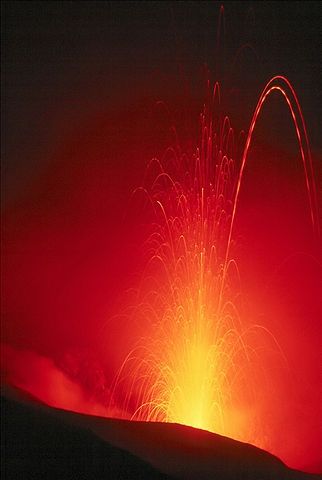
Because Mount Paricutin originated from a single vent, it will never erupt again.
Creative Commons photo courtesy Wikimedia/Wolfgang Beyer
Eruption's Impact
The locals had no real folk legends in regards to volcanic eruptions in the region. But when ParicutÃn burst onto the scene, the past events that supposedly foretold the disaster. The initial event was a sacrilege: the removal of a huge wooden cross on a hillside in 1941. The second such event, in 1942, was one that whiffed of biblical retribution in the form of a plague of locusts. Thirdly, in 1943, a series of earthquakes rocked the region.
On February 19, 1943, the day before the Paricutin began to erupt, about 300 earthquakes hit the area. Then on February 22, with the new cone rising, the first of several geologists who would monitor and map Paricutin's behavior over the next nine years arrived on site. From then on, Paricutin was under almost constant observation: It yielded a vast amount of information that would be studied for years to come.
In the summer of 1943, during the volcano's most violent period, the cone stretched skyward to 1,100 feet, about 80% of its final height, with lava rising to about 50 feet below the crater's rim. Frequent explosions carried ash as faraway Mexico City; and virtually all of the vegetation for miles around the growing crater were destroyed.
Over the next several years, flows of lava spewed with only short periods of interruption. However in February of 1952, almost exactly nine years after Paricutin sprung to life, the volcano experienced its last major gasp of activity. By then, villages and farms were a mere memory, and the local people who worked the area land had relocated with help of the Mexican government. Public domain photo courtesy Wikimedia Commons
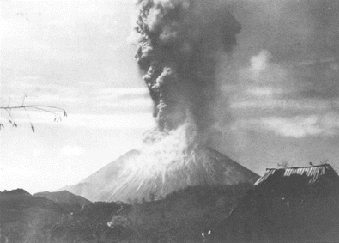
After the end of it's nine-year eruption, Paricutin's total height had grown to just under 1,400 feet.
Public domain photo courtesy usgs.gov

Detailed Paricutin Information
Wikipedia Entry
On February 20, 1943, farmer Dionisio Pulido was prepping his land for early season planting when he noticed a 150-foot fissure opening across his field. Pulido later stated how the rumbling ground "felt like thunder", he also said he witnessed the....(read more at Wikipedia)
ParicutÃn Volcano Video - Take a virtual tour of the volcano.
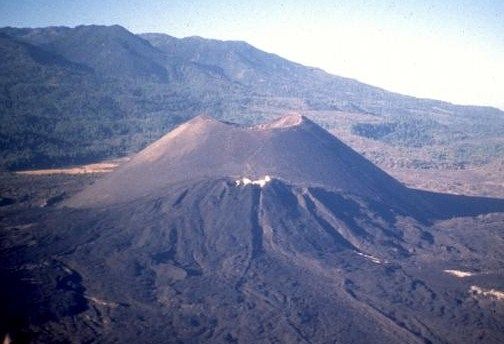
Climbing Paricutin is a popular year-round activity for tourists. To learn more about ascending Paricutin click here.
Public domain photo courtesy Wikimedia/U. S. Government
This content is accurate and true to the best of the author’s knowledge and is not meant to substitute for formal and individualized advice from a qualified professional.
© 2008 Twmarsh



